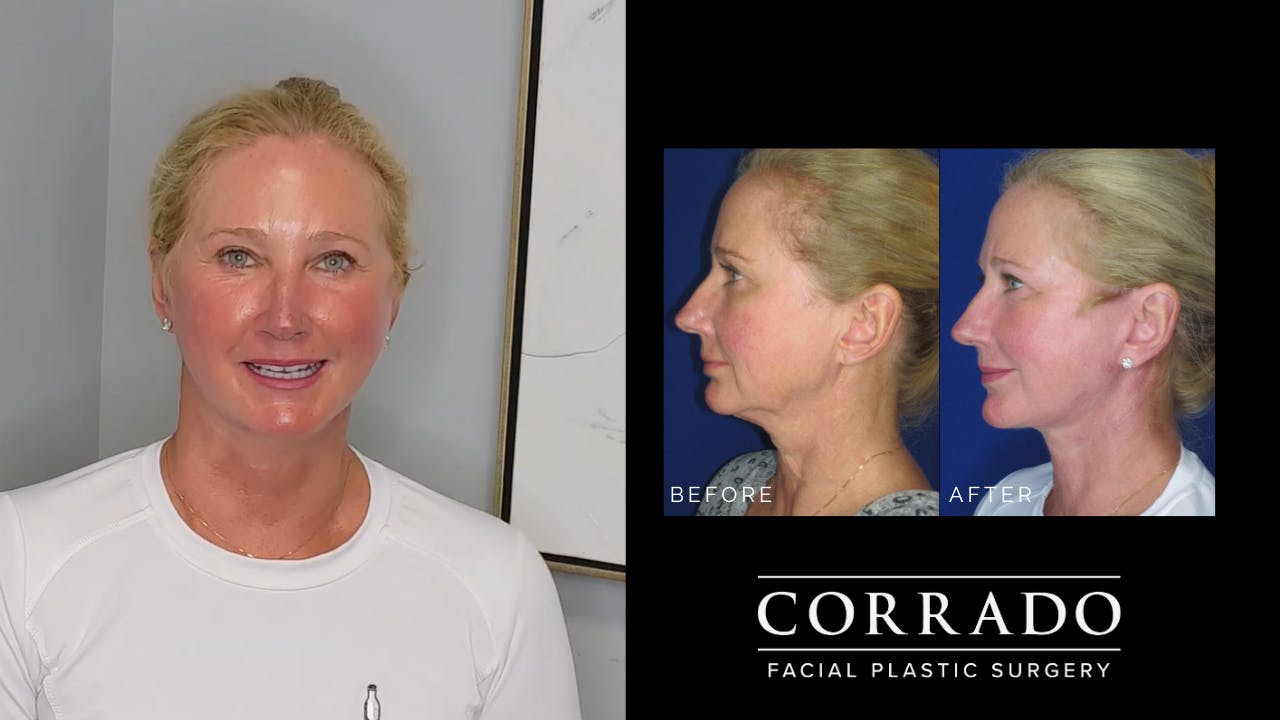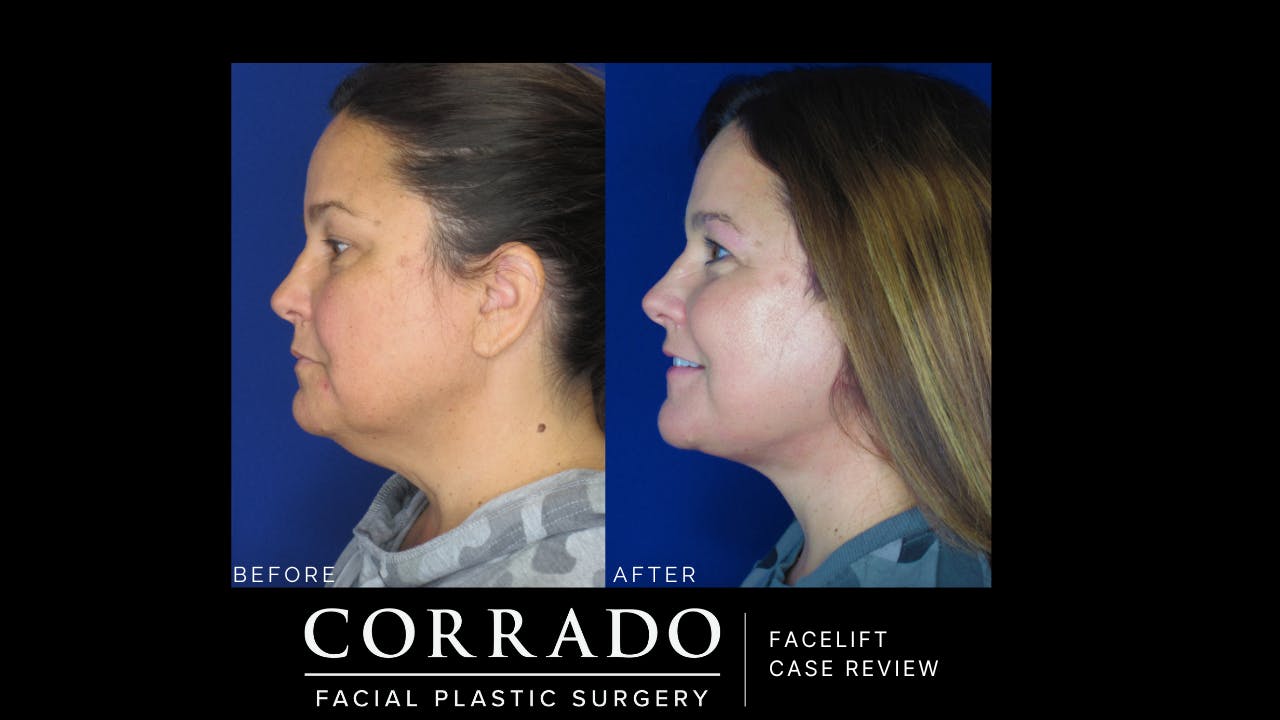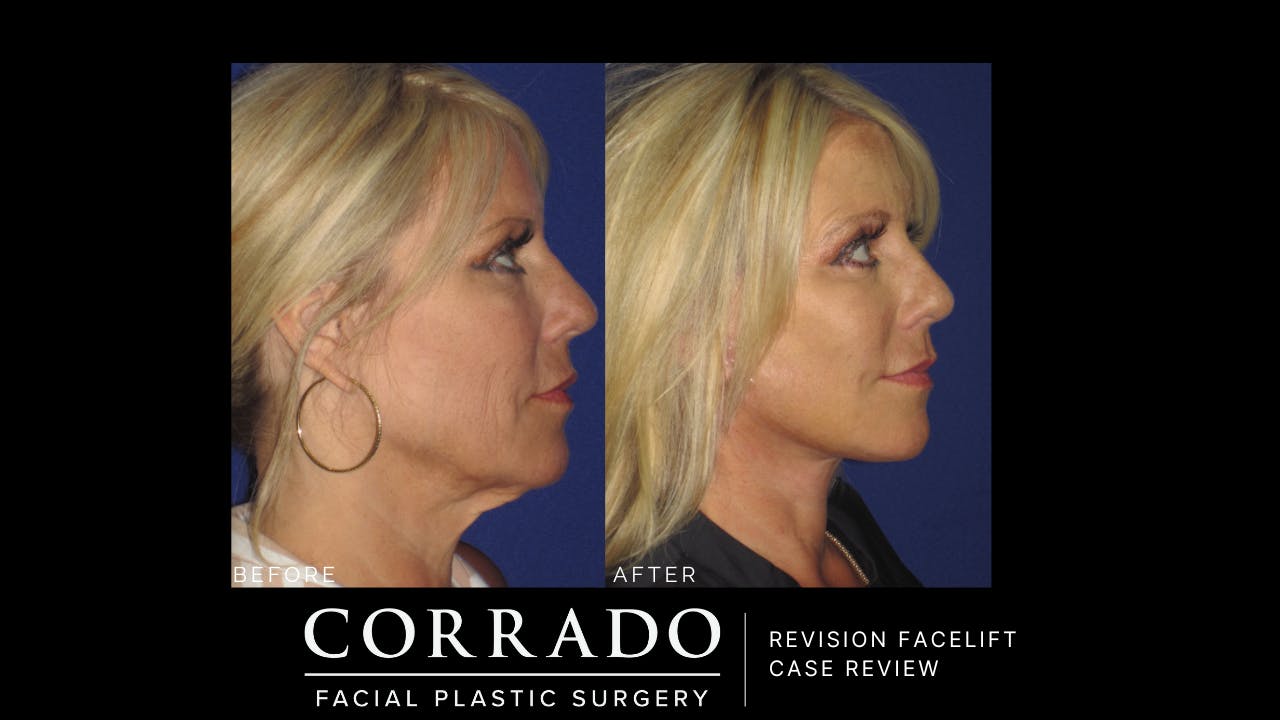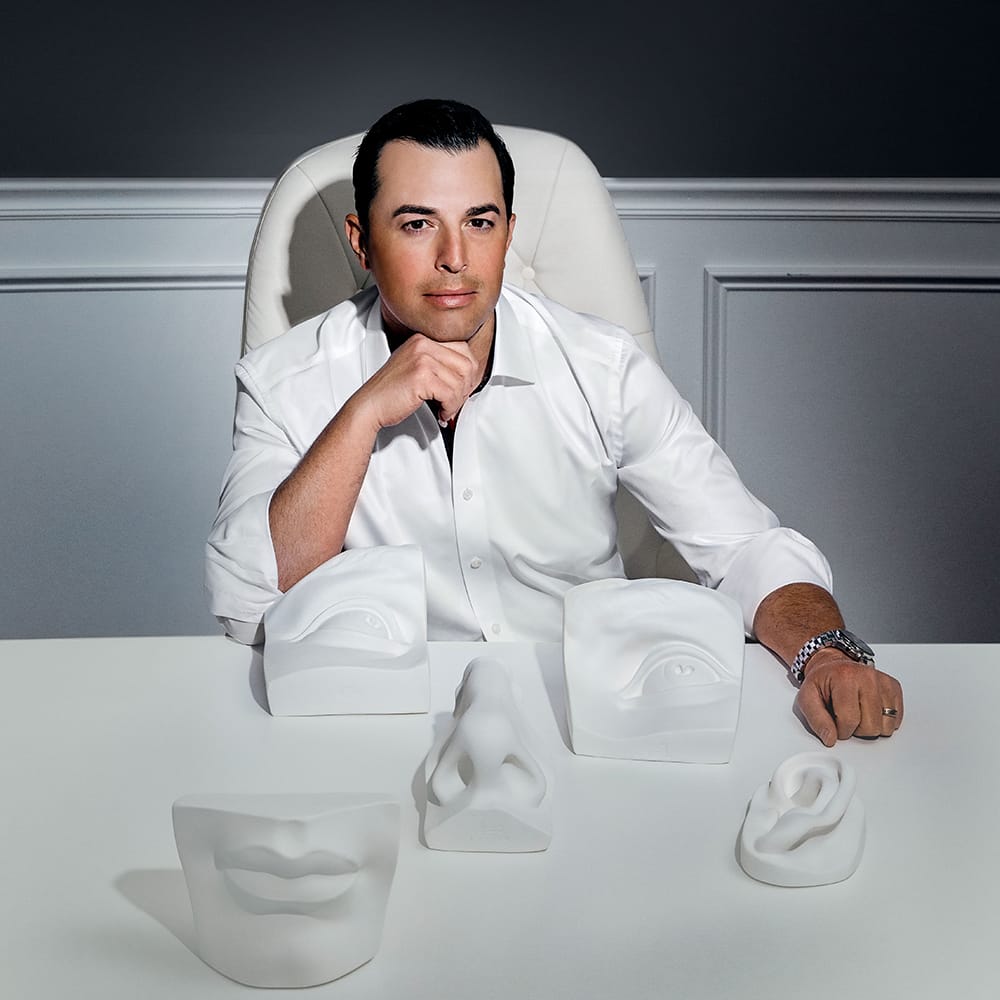What Are the Benefits of Facelift Surgery?
Some of the benefits of Dr. Corrado's facelift surgery in Philadelphia include:
- Correction of lower facial and neck laxity.
- Improved jawline definition with correction of sagging skin, commonly referred to as “Jowls.”
- Removal of excess fatty tissue in the face or neck is commonly referred to as the “Double Chin.”
- Correction of sagging skin or muscle “banding” present in the neck leading to a “Turkey Neck.”
- Improvement of deep facial wrinkles and skin folds.
- Overall natural rejuvenation of the lower face and neck.
- Scars are well hidden and nearly impossible to see.
- Increased self-confidence.
A facelift can be combined with other procedures such as neck lift, eyelid surgery, brow lift, facial fat grafting, and non-surgical treatments.






































